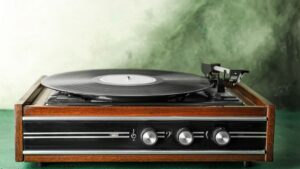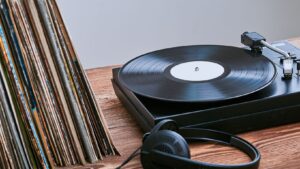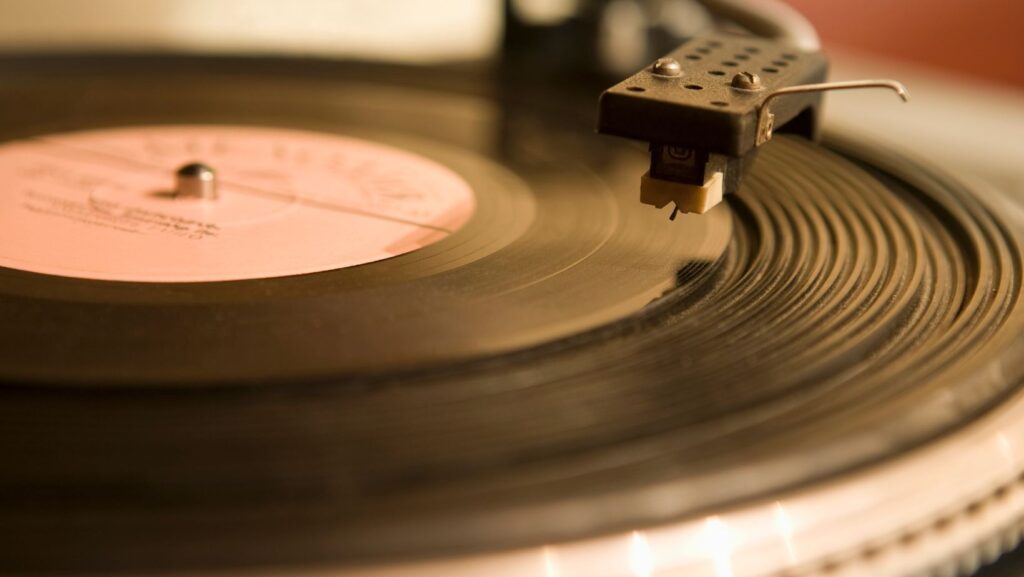In an age where digital music reigns supreme, the allure of vinyl records and their warm, authentic sound continues to captivate audiophiles and casual listeners alike. For those venturing into the world of turntables, understanding the essentials of a record player setup is key to unlocking the full potential of this timeless medium.
Dive into this analog journey and discover how to create the perfect setup for your vinyl collection.
Understanding Record Players
Record players have a long-standing appeal due to their unique sound quality. A record player’s primary function is to convert the grooves on a vinyl record into sound. It consists of several critical components, each playing a specific role in sound reproduction.

- Turntable: The flat, rotating platform that spins the vinyl record at a constant speed. Ensuring precise rotation speeds, like 33 1/3 RPM or 45 RPM, allows records to play correctly.
- Tonearm: This moves across the record, holding the cartridge and stylus. Proper balance and alignment are crucial for accurate tracking and sound quality.
- Cartridge: Houses the stylus and converts the physical impressions of record grooves into an electrical signal. Choices here affect sound characteristics significantly.
- Stylus (Needle): A fine tip that tracks the grooves on the record surface. A well-maintained stylus improves sound fidelity and prevents record wear.
These components, when optimized, create an engaging analog audio experience. Understanding each part’s role is essential to harness the full potential of a record player setup.
Key Components of a Record Player
A record player’s functionality depends on several core components, each contributing to the overall audio experience. These record player essentials include the turntable, tonearm, cartridge and stylus, and platter.
Turntable
The turntable is essential as it spins the vinyl at consistent speeds, often 33 1/3 or 45 RPM. Precision in speed is crucial for maintaining sound fidelity, impacting the playback quality. A direct-drive or belt-drive motor typically powers the turntable.
Tonearm
The tonearm’s role is to hold the cartridge and stylus, maintaining the correct weight and alignment. Proper balance prevents damage and ensures the grooves are accurately tracked. Adjustable tonearms allow users to fine-tune tracking force and anti-skate settings.
Cartridge and Stylus

The cartridge and stylus work together to convert mechanical motion into electrical signals. The stylus, often diamond-tipped, traces the record’s grooves. This signal is critical in producing high-quality sound, with various cartridge types like moving magnet (MM) or moving coil (MC) providing different audio characteristics.
Platter
The platter supports the record and ensures stable rotation. Its material and weight affect sound isolation and vibration damping. A heavier platter can offer better sound stability by minimizing external vibrations and maintaining consistent rotation speeds.
Record Player Essentials
Record player essentials enhance the vinyl listening experience by providing maintenance and protection. Proper care leads to preserving quality and longevity.
Record Cleaning Kit
A record cleaning kit is critical for removing dust and debris from vinyl surfaces. These kits often include a cleaning solution and a soft cloth. Clean records reduce surface noise, ensuring better audio fidelity.
Anti-Static Brush
An anti-static brush prevents static buildup on records, reducing crackling sounds. This accessory usually features carbon fibers that effectively remove dust from record grooves. Regular brushing before each play helps protect the stylus and improve playback quality.

Record Sleeves
Record sleeves provide necessary protection from dust and physical damage. Inner sleeves, often made of anti-static materials, shield vinyl from scratches. Outer sleeves preserve album covers, keeping them in mint condition.
Tips for Maintaining Your Record Player
Maintaining a record player is crucial for preserving sound quality and extending the longevity of both the device and vinyl records. These essential practices ensure an optimal listening experience.
Regular Cleaning
Cleanliness greatly impacts audio fidelity and the lifespan of both records and components. Dust and debris accumulate on records and stylus tips, affecting playback. A record cleaning kit effectively removes this debris, reducing unwanted noise.
Proper Storage
Proper storage prevents physical damage and deterioration of vinyl records. Store records vertically to avoid warping and utilize inner and outer sleeves for added protection from scratches and environmental elements.
Whether they’re seasoned collectors or newcomers, investing in a quality setup suited to their needs ensures a rewarding listening experience. The right record player, combined with proper care and accessories, allows them to savor the rich, warm tones that only vinyl can deliver. Embracing vinyl’s charm and intricacies offers a timeless musical adventure that digital formats simply can’t replicate.



